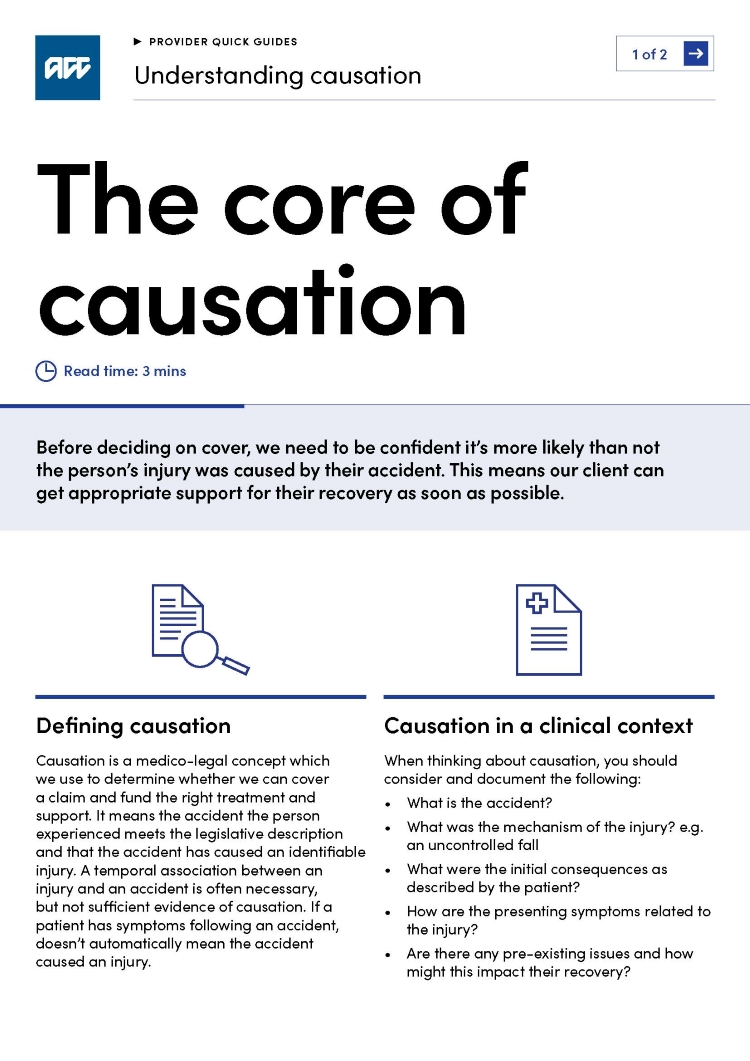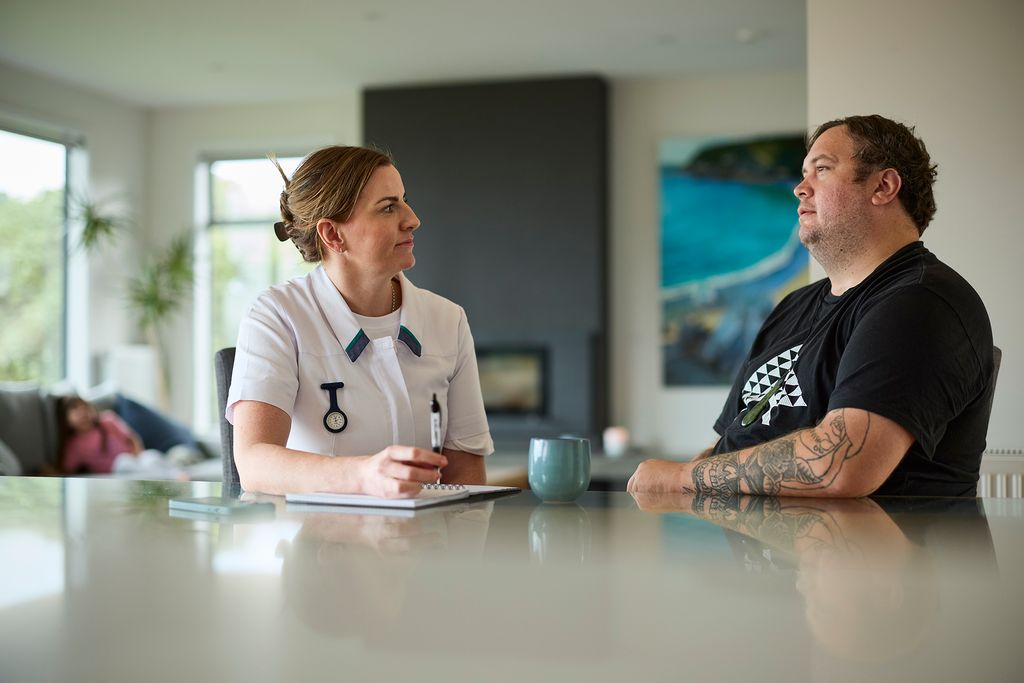Understanding causation
Before deciding on cover, we need to be confident it’s more likely than not the person’s injury was caused by their accident.
The link between the injured person's personal injury and the accident is known as causation.
On this page
Causation in a clinical context
When thinking about causation, you should consider and document the following:
- What is the accident?
- What was the mechanism of the injury? For example, an uncontrolled fall?
- What were the initial consequences as described by the patient?
- How are the presenting symptoms related to the injury?
- Are there any pre-existing issues and how might this impact their recovery?
Causation for complex injuries
In most cases, determining causation is simple and cover will be approved quickly. But sometimes that may not be as easy to do. In these cases, we need to be sure the accident was the major or substantive cause of the injury.
This may include when the injury is complex or if the claim was lodged more than 12 months since the injury. These claims are considered on a case-by-case basis.
Cover for pre-existing conditions
Under our legislation, we provide cover for personal injury, but not if the person’s pre-existing condition is made worse by an accident. If a person with a pre-existing condition has an accident, they might be impacted more seriously compared to someone who doesn’t have that condition.
Example: A person with diabetes may take longer to heal from their covered injury and may need additional support. In those cases, we’d generally support with the extra wound care treatment, but not with any changes to their diabetes management.

Quick guide: Causation
Before deciding on cover, we need to be confident it’s more likely than not the person’s injury was caused by their accident. The link between the injured person's personal injury and the accident is known as causation.
Getting help faster
Understanding causation helps us make faster cover decisions and understand what ACC-funded care, treatment and rehabilitation clients need to meet their unique needs.
That could include services like:
- home help
- physiotherapy
- rehabilitation equipment
- weekly compensation
- or other costs associated with recovery.
Video: Understanding causation
Video transcript for Understanding causation
Visual
Screen shows Understanding Causation. Clock shows watch time of 3 minutes 30 seconds.
Text displays Dr Milly Hanlon, Medical Advisor
Milly is sitting in a chair facing the camera. A pot plant, water jug, cup of water and pen and notepad sit on a small table beside her.
Transcript
After you lodge a claim with us there are a few things we need to think about before we can decide on cover for your patient. One of those key things is causation which is very closely linked with cover. Essentially, we need to be sure there's a direct link between the person's injury and their accident. To help explain what we mean by causation, we're going take you through what we consider when making cover decisions.
Visual
Screen shows What is causation. Clock shows watch time of 39 seconds.
Screen cuts back to Milly in the chair.
Transcript
When we talk about causation, what we mean is that it's more likely than not, the person's identified injury was caused by their accident. In some instances, drawing a link between the injury and the accident is simple. For example, if a person falls off a ladder and breaks their arm, we can be confident we’ve identified causation. In these cases, we'll be quick to approve cover, meaning the person can receive the appropriate support they need for their recovery. But we know people get injured in many different ways or have pre-existing health conditions which can make this decision trickier.
Visual
Screen shows What about complex injuries? Clock shows watch time of 1 minute and 5 seconds.
Screen cuts back to Milly in the chair.
Transcript
In situations where causation isn't immediately clear, we'll need to be satisfied the accident was the material cause of the injury. If the injury is complex or if the claim was lodged more than 12 months after the injury happened, it might take us a bit longer to do that. That's because we consider the evidence for each claim before we make a decision. For example, if a person with a background of osteoarthritis has a fall and suffers a meniscal tear to their knee, causation might be more difficult to determine. While time between the injury and accident is important in most cases, there are other factors we may consider. These include: How the accident or injury happened, whether the force of the accident was enough to cause the person's acute injury and whether there were any underlying conditions or factors which contributed to the injury.
Visual
Text displays Mechanism of injury, Biological plausibility, Other clinical explanation
Transcript
Our legislation doesn't allow us to cover pre-existing conditions which have been aggravated by an accident. But cover may be possible if the accident has caused a new injury.
Visual
Screen shows Why is causation important? Clock shows watch time of 39 seconds.
Screen cuts back to Milly in the chair.
Transcript
The ACC-funded treatment, rehabilitation and care our clients receive is based on their unique injury-related needs. That could be a range of services such as home help, physiotherapy, rehabilitation equipment and in some cases weekly compensation. Over time, your patient's needs might change too so it's important to let us know if you need to update their diagnosis. Understanding causation helps us tailor the appropriate support to get our clients back to independence. So there you have it, the basics of causation. Thanks for watching.
Visual
Screen changes to roll through three statements: Causation: Means the accident more likely than not caused the injury. Is considered on a case-by-case basis. Allows clients to receive appropriate supports.
Screen changes to show For more information and resources visit acc.co.nz/health-providers.
Screen changes again to show the ACC logo and tagline He Kaupare. He Manaaki. He Whakaora. Prevention. Care. Recovery.
Last published: 29 October 2025

